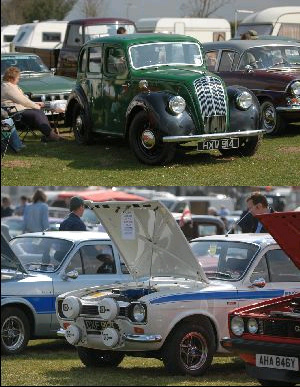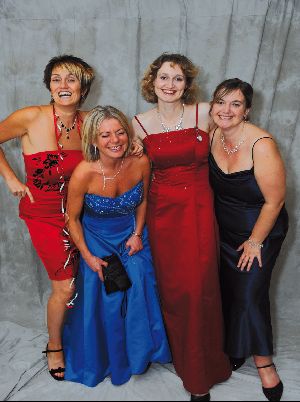articles/Events/eventphotographyprobably-page4
Event Photography - Probably the best business in the world - part 4 of 1 2 3 4 5
Published

The market for event photography is virtually unlimited and space precludes me from detailing the many different types here. The subject is covered in more depth in the 'Event Photography for Profit' one-day training courses, run monthly in conjunction with System Insight. Suffice to say that the market covers black-tie, schools, sports, universities, animals, charities and business, to name but a few.
The correct equipment is vital to successful event photography and contrary to popular belief and what others may tell you, I can guarantee that you could be up and running from a standing start, and making money, for less than £1,000 with some judicious purchases.
A reasonable quality digital camera is obviously the first pre-requisite. I am an unashamed Nikon user and love the D2Xs and the D200, particularly with the fast f2.8 Nikkor lenses. My favourite lens for most event work is the 17-55 f2.8 which gives the coverage I have found most useful. For Canon users, go for the 1D, 5D or 30D and Fuji's S2, S3 and S5 are again superb cameras for most event work. A word of caution though; if you are going to concentrate on sports, motor sports or equestrian events you will need a camera with the ability to write files fairly quickly and a long and fast telephoto lens is essential. Don't think, however, that you have to spend a fortune to get started in event photography.
Another major factor is the ability to print immediately or at least within a short time of taking the picture and this is where the latest model dye-sublimation printers come into their own.
For those not familiar with dye-sublimation technology, the machines basically work by 'boiling' (or sublimating) yellow, cyan and magenta dyes from a ribbon directly into the paper. This gives a 'continuous tone' photo-quality image unlike the 'half-tone' or 'dithered' image produced by inkjet printers using very high resolutions to achieve their results. Dye-sublimation printers also put a final layer or 'overcoating' on the pictures so they come out dry and ready to handle.
Dye-subs obviously come in a range of different types with prices from £300 to nearly £4,000 but I have found over the years that the most popular print sizes I have sold at events have been 5x7 and 9x6, depending on the event so this rules out the flatbed-type printers which typically print 10x8 or 12x8 on the appropriate sized paper and have the added disadvantage that the prints have to be trimmed to size.

Other equipment would include a laptop or notebook, suitable software (I use Google's 'Picasa' - it's free and it does the job!), lights and a background to set up a mini-studio and a set of signs so you can direct people to where you are. I should also mention that I always use at least one and often two assistants on the basis that I am there to take the pictures and the one picture I will never sell is the one I haven't taken because I was trying to do the printing as well!
Instant digital printing has many benefits to the event photographer, not the least of which is that it satisfies the 'I want it now' culture. The fact that the picture is available there and then assists emotional purchasing and increases sales. We have also found that each sale encourages others attending the event to buy, especially at an evening event when your customers may have had a few alcoholic drinks! Also don't forget that selling on the day or evening means you have no follow-up admin and no post and packaging costs.
Having sorted out your equipment, the final, and probably most important, factor to making your event a profitable one is your workflow. You could own the most expensive equipment and be an award-winning photographer with lots of letters after your name but if you get your workflow wrong your event will not be successful or profitable.
The workflow is down to the type of event, where it is, the number and type of people attending, and your own equipment. The simplest and most effective workflow is to actually print every picture you have taken and put them all out on display for sale. This works because your customers will have something to pick up and, once they have picked it up, they are on their way to owning it.
Alternatively, you can send your pictures to your laptop or kiosk system, (either by tethering with a USB cable, using wireless or good old-fashioned downloading from your CF card) and get your customers to view their pictures on a monitor before they buy. The obvious advantage of this is that you are only printing what is bought. A disadvantage is that the image on a screen is a little less impressive than a 9x6 print in a mount.
Please Note:
There is more than one page for this Article.
You are currently on page 4
- Event Photography - Probably the best business in the world page 1
- Event Photography - Probably the best business in the world page 2
- Event Photography - Probably the best business in the world page 3
- Event Photography - Probably the best business in the world page 4
- Event Photography - Probably the best business in the world page 5
1st Published
last update 18/07/2022 13:28:10
More Events Articles
There are 0 days to get ready for The Societies of Photographers Convention and Trade Show at The Novotel London West, Hammersmith ...
which starts on Wednesday 15th January 2025







